Camille Claudel in 5 Sculptures
Camille Claudel was an outstanding 19th-century sculptress, a pupil and assistant to Auguste Rodin, and an artist suffering from mental problems. She...
Valeria Kumekina 24 July 2024
Adélaïde Labille-Guiard was one of the most prominent women artists of the end of the 18th century in Paris. Despite misogynistic policies for women’s artistic education, she enjoyed recognition for her portraits. The constant political changes that occurred in France, as well as the support and rejection of other artists, patrons, and artistic institutions, altered her life and career.
Adélaïde Labille-Guiard was born in 1749 and was the daughter of a Parisian merchant, Claude Labille. Though her family was not artistic, art surrounded her as her father owned a clothing shop called La Toilette in Rue Neuve des Petits-Champs. At the time, this street was frequented by artists. She received training from the miniaturist François-Elie Vincent, officer of the Academie de San Luc in Paris.
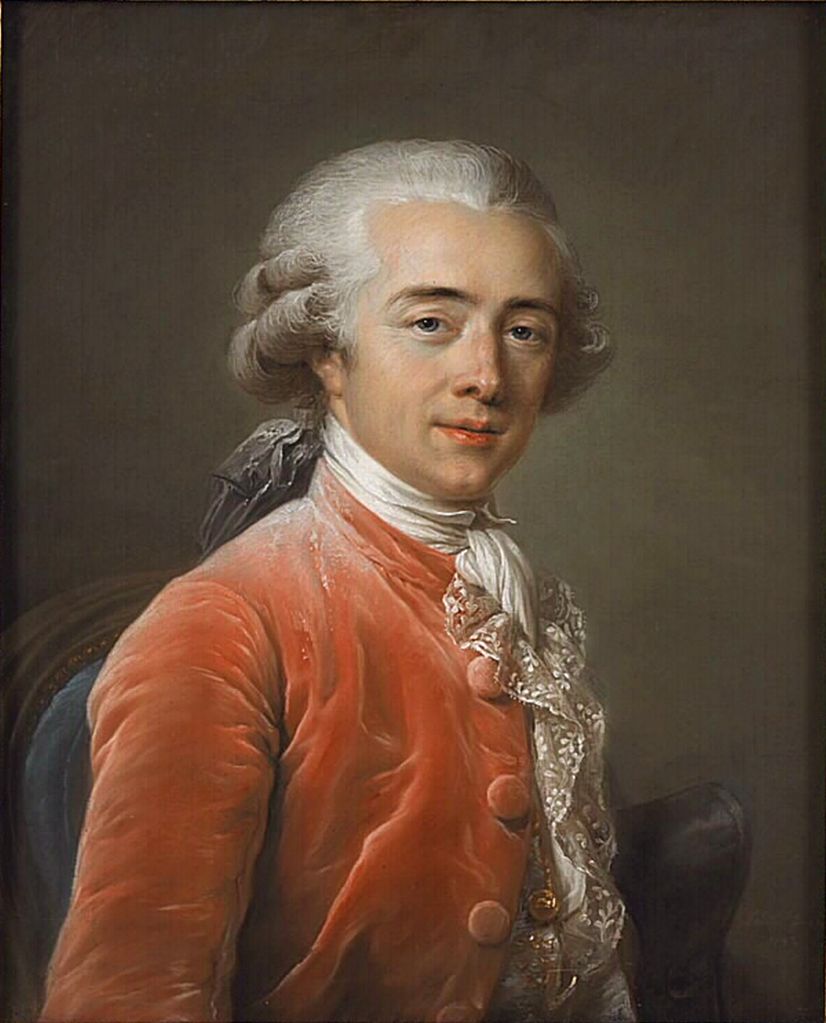
Adélaïde Labille-Guiard, François-André Vincent, 1783, Louvre, Paris, France.
Later on, his son François-André Vincent introduced her to oils. He became a long-time friend and colleague, which ended up affecting her reputation. Eventually, in 1800, he became her second husband. Labille-Guiard married first to Louis-Nicolas Guiard, hence her hyphenated surname. He worked in the Treasury of Clergy and she legally separated from him in 1779.
Another important figure in Labille-Guiard’s life was the pastelist Maurice-Quentin de La Tour.
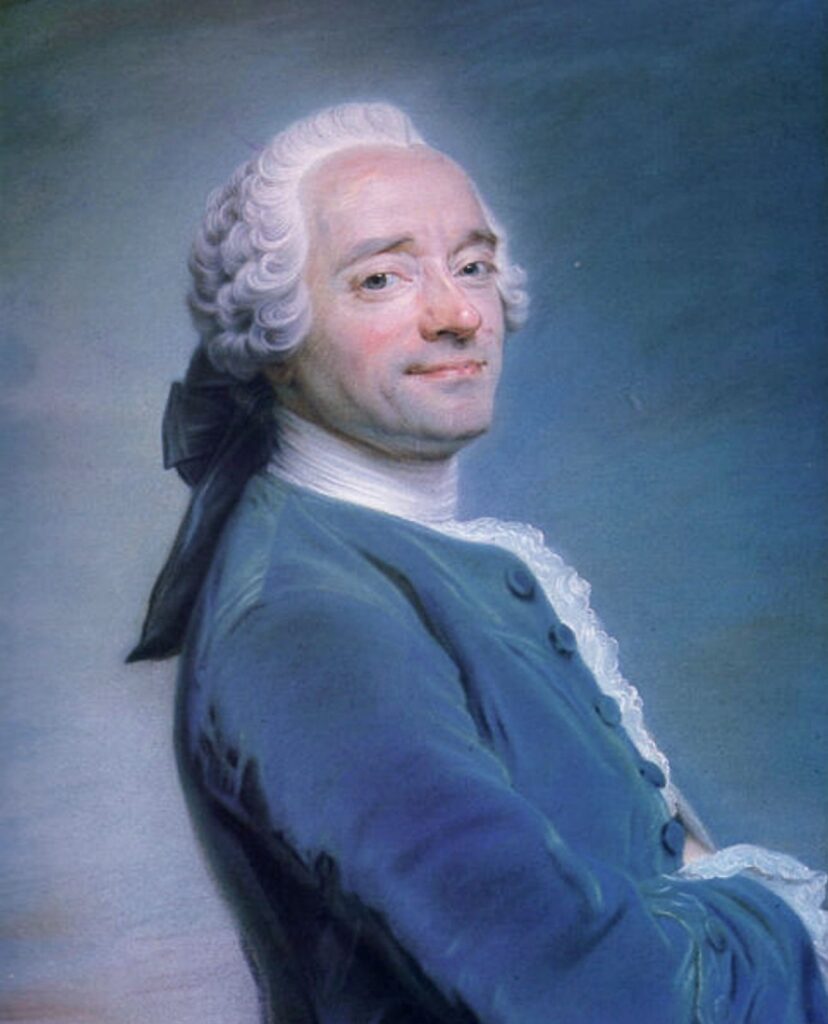
Maurice Quentin de La Tour, Self-Portrait with Frill, c. 1750, Musée de Picardie, Amies, France.
At that time, exhibiting works was not easy for artists, even worse if they were women. There was the belief that women should keep their work quiet and private. Nevertheless, Labille-Guiard defied this and looked for opportunities to show her pieces to the public. But the Paris Salon was gaining relevance as a public exhibition and she wanted to show her works there. First, she needed to become a member of the Academy.
Unfortunately, as soon as she entered the Paris Salon, speculation about the story of her success sprung. An anonymous pamphlet called Suite de Malborough au Salon 1783 was distributed with rumors about an affair between her and her friend François-André Vincent. It read as follows,
His loves makes your talent. Love dies and talent falls.
Cited after Laura Auricchio
For her defense, she asked Comptess D’Angiviller for help. Curiously, Count D’Angiviller had been adamant about not accepting any woman into the Academy. She wrote a letter to the Comptess. In a smart move, she turned the attention from her to the damage done to her father’s name. If no one cared for the reputation of a woman, they might care for that of an old man.
One must expect to have one’s talent ripped apart… it’s the fate of all who expose themselves to public judgment, but their works, their paintings, are there to defend them, if they are good they plead their cause. Who can plead on behalf of women’s morals?
Laura Auricchio: Adélaïde Labille-Guiard: Artist in the Age of Revolution.
Adélaïde Labille-Guiard’s masterpiece is this self-portrait from 1785, which also appeared at the Salon. Praises focused on the treatment of the fabrics, a legacy from her father’s trade. In the painting, Labille-Guiard presents herself not only as a proud artist but also as a teacher with her students Marie Gabrielle Capet (1761–1818) and Marie Marguerite Carreaux de Rosemond (died 1788) by her side. She was a committed advocate for women artists, often using her membership at the Academy to ask for admittance of women to the Academy and classrooms.
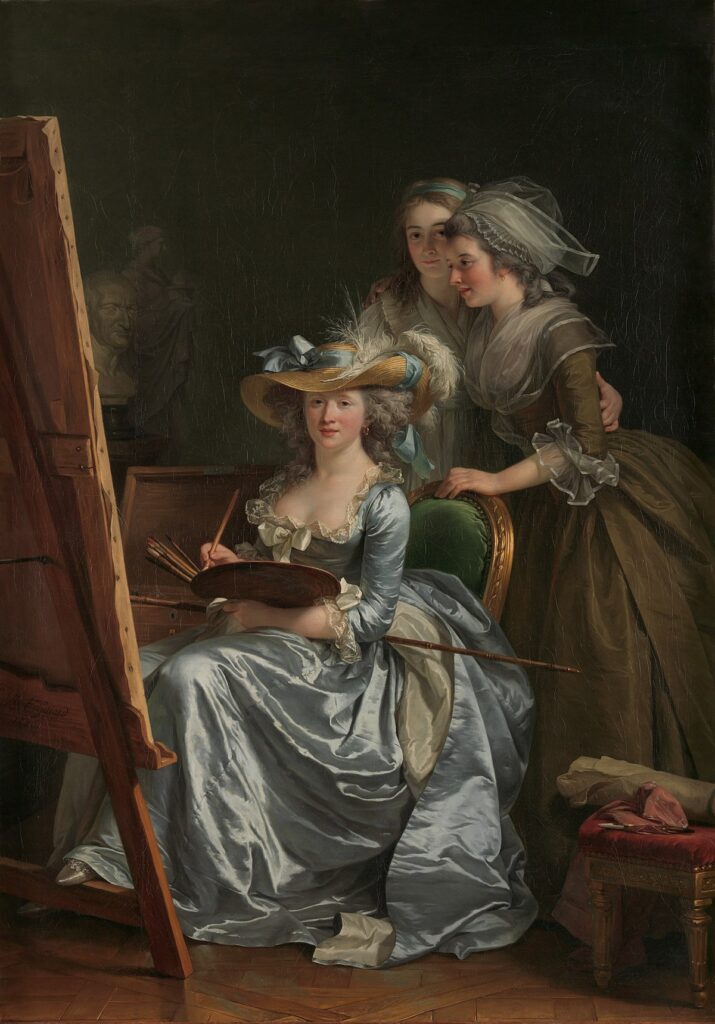
Adélaïde Labille-Guiard, Self-Portrait with Two Pupils, Marie Gabrielle Capet and Marie Marguerite Carreaux de Rosemond, 1785, Metropolitan Museum of Art, New York City, NY, USA.
During her time at the Academy, she earned the title of Painter of the Mesdames, the sisters of Louis XV. They were unmarried, childless women, but they were considered the daughters of France. One of their portraits by Labille-Guiard (below) was praised and elevated to a genre of history painting for its level of detail and iconographic complexity. For example, the relief of Louis XV with their father and mother recalls her lineage. Another relief at the top of the room narrates the deathbed of Louis XV, while the architectural plan shows an Augustine convent that speaks of her religiosity and virginity. Finally, Labille-Guiard presents Adélaïde of France as a royal member with dignity.
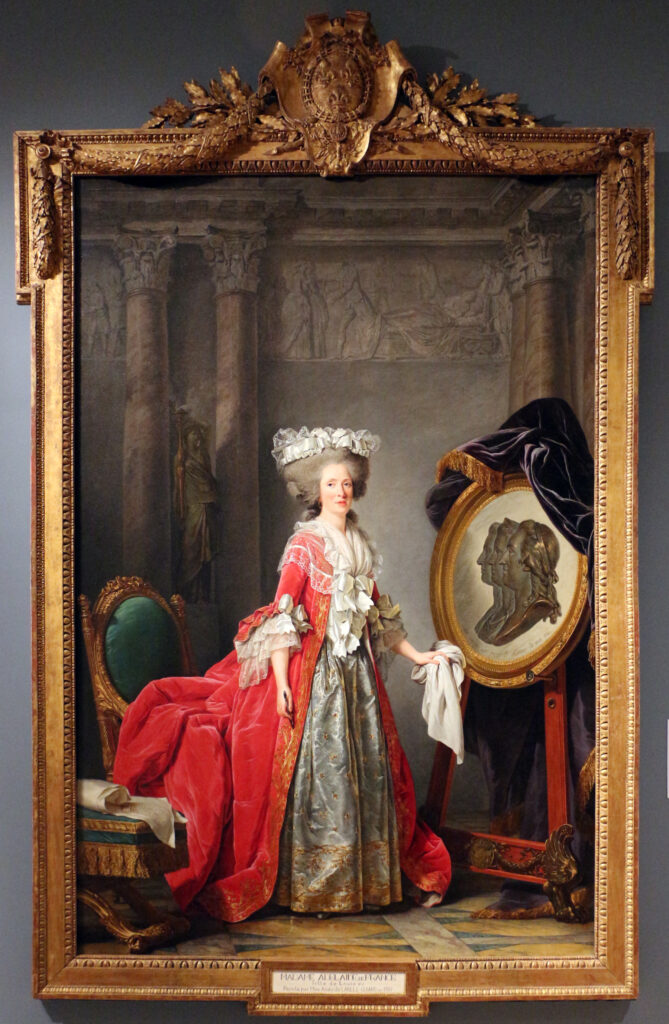
Adélaïde Labille-Guiard, Portrait of Princess Madame Adélaïde of France, 1787, Speed Art Museum, Louisville, Kentucky, USA.
Unlike Élisabeth Vigée le Brun, who left France during the French Revolution, Adélaïde Labille-Guiard stayed in Paris. However, her association with the royal family put her at risk. Aware of this, she needed to alter her style to fit the new government. For instance, her portrait of Robespierre differs significantly from her previous work. The man in the portrait is not a simple peasant, but he looks soberer than the royals and aristocrats from before. Plus, the background is a simple brown color, instead of showing a luxurious interior.
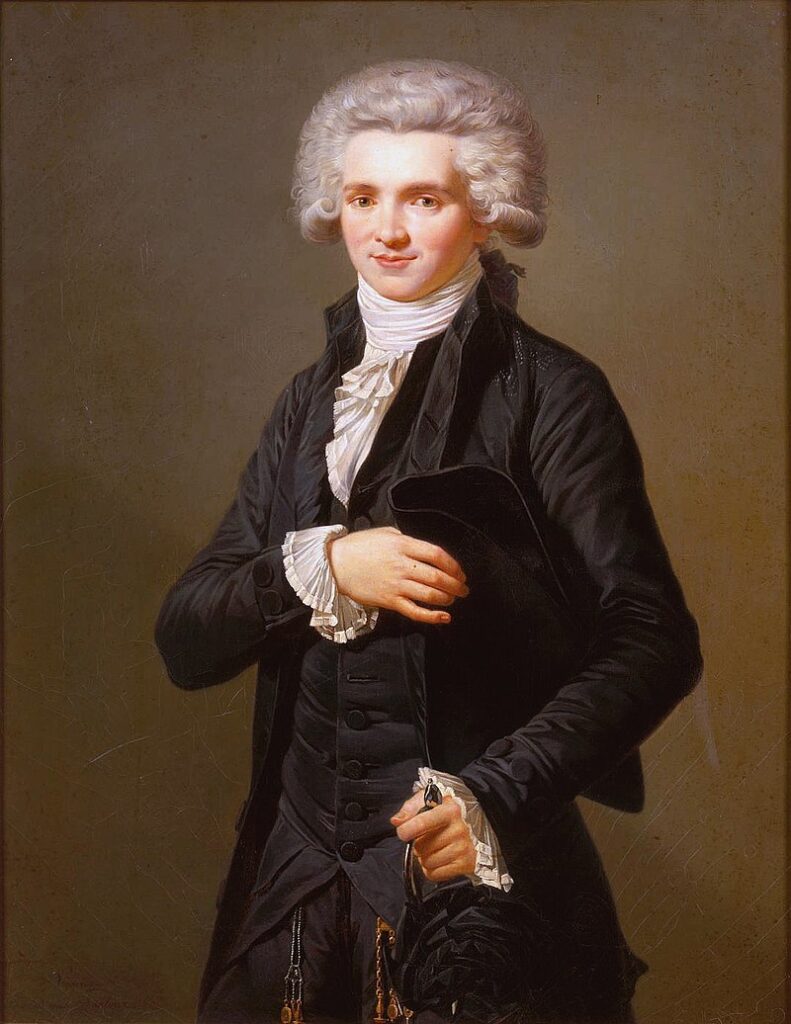
Adélaïde Labille-Guiard, Maximilien de Robespierre Dressed as Deputy of the Third Estate, 1791, Palace of Versailles, Versailles, France.
Adélaïde Labille-Guiard came to be portrayed by her student Marie-Gabrielle Capet in this painting. We can see Labille-Guiard working on a portrait, Capet on her side, and François-André Vincent pointing at the canvas. The artist is working on the Portrait de Joseph Marie Vien, who is seen wearing a blue and golden robe.
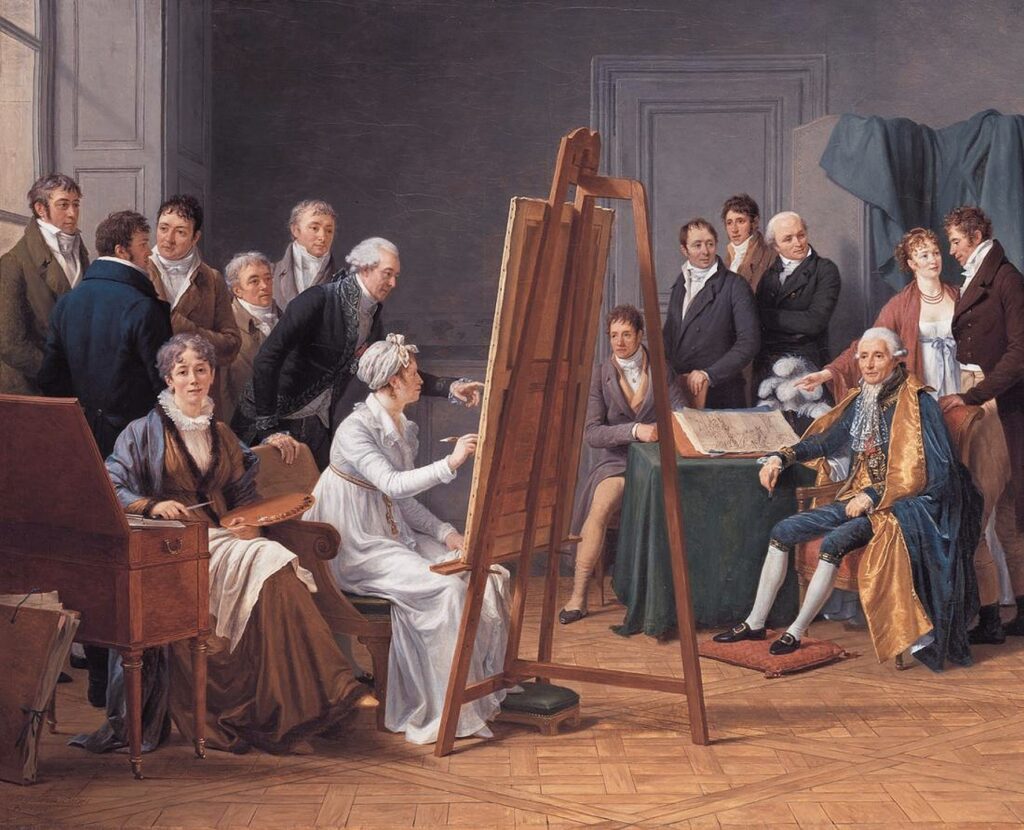
Marie-Gabrielle Capet, Atelier of Madame Vincent, 1808, Neue Pinakothek, Munich, Germany.
Labille-Guiard died of illness in 1803 but her legacy lives on. In 2020, Gabriela Dellosso, a contemporary American artist, painted The Burning of Adélaïde Labille-Guiard’s Masterpiece (Self-Portrait) remembering the burning of Labille-Guiard’s works during the French Revolution. Two years later, Susanne Dunlap published the historical novel The Portraitist about the artist.
Laura Auricchio: Adélaïde Labille-Guiard: Artist in the Age of Revolution, 2009, J. Paul Getty Museum.
Laura Auricchio: Portraits of Impropriety: Adélaïde Labille -Guiard and the Careers of Professional Women Artists in Late Eighteenth-Century Paris, 2000, Columbia University.
Laura Auricchio: ‘Self-Promotion in Adélaïde Labille-Guiard’s 1785 ‘Self-Portrait with Two Students‘ in The Art Bulletin, Vol. 89, No. 1, 2007.
Katharine Baetjer: Adélaïde Labille-Guiard (1749–1803), 2016, Metropolitan Museum of Art website. Accessed: 28 Feb. 2024.
Jessica L. Fripp: Adélaïde Labille-Guiard: Artist, Friend, Teacher, 2021, ArtHerstory. Accessed: 28 Feb. 2024.
Elisabeth Noelani Kirschner: Representing Rivalry on the Eve of Revolution: Adélaïde Labille-Guiard’s Portrait of Madame Adélaïde and Elisabeth Vigée-Lebrun’s Portrait of Marie Antoinette with Her Children, 2018, American University.
Jennifer Dawn Milam and Melissa Lee: Women, Art and the Politics of Identity in Eighteenth-Century Europe. 2003, Aldershot.
Mary Sprinson De Jesús: ‘Adélaïde Labille-Guiard’s Pastel Studies of the Mesdames de France’ in Metropolitan Museum Journal, v. 43, 2008.
Heidi Anne Strobel: Artistic Patronage at the Court of Queen Charlotte, 2002, ProQuest Dissertations Publishing.
DailyArt Magazine needs your support. Every contribution, however big or small, is very valuable for our future. Thanks to it, we will be able to sustain and grow the Magazine. Thank you for your help!